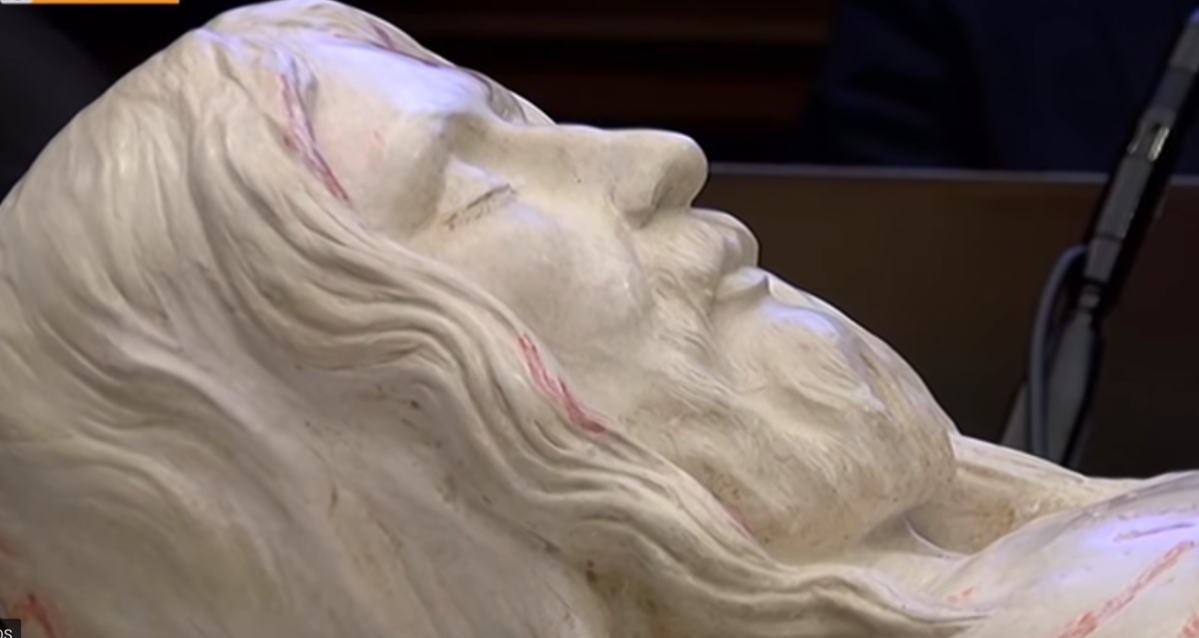Venice exhibit shows a correlation between the way the Shroud of Turin was wrapped and the methods outlined in the scriptures. The Museum of the Scuola Grande di San Marco in Venice is hosting an exhibit of the Shroud of Turin, which began in mid-July and is scheduled to continue until the September 26. The exposition, titled “The Christ of the Shroud: A Sacred Tridemensional Anatomy,” features a life-sized, 3D model of Jesus, which was created using the physical dimensions of the image on the Shroud of Turin.
On the Museum of the Scuola Grande di San Marco website, the exhibition was announced this way:
We announce the opening of the exhibition “The Christ of the Shroud,” on the anatomical study made by Sergio Rodella of the imprint left by the body of Jesus on his funeral sheet, which joins the numerous studies that, for over a century, the most disparate disciplines (photography, forensic medicine, biology, botany, chemistry, digital technology, numismatics, etc.) continue to dedicate to this precious cloth.
The exhibit will also feature relics of the Passion of Jesus, the first photographic negatives of the Shroud of Turin, and the icon of the Mandylion.
Each Friday, the museum will hold free guided tours of the exhibition, which will take visitors through the Shroud’s history. The guides explain that the scientific three-dimensional reconstruction of the body wrapped in the Shroud reveals a concordance between the scriptures and the way in which the body was wrapped, which could suggest the authenticity of the Shroud.

Read more:
Watch the live-streaming of the Holy Shroud of Turin here
The museum, which boasts a section dedicated to the history of medicine, explains that the exhibit will use the curator’s expertise to explain “the excruciating humanity of this death,” and how much Jesus would have suffered during the Crucifixion:
The Shroud is also a true icon of pain; it is a gift to try to understand the incomprehensible suffering of the sick, of the terminally ill, of the dying. This place of ours, where culture and hospital care find synthesis, could not therefore be morally and scientifically more suitable to host this exhibition.
The exposition will run until September 26. Those who wish to take a free guided tour are asked to schedule their visit at least two days in advance. Coronavirus guidelines, such as social distancing and the wearing of face masks, are required.


